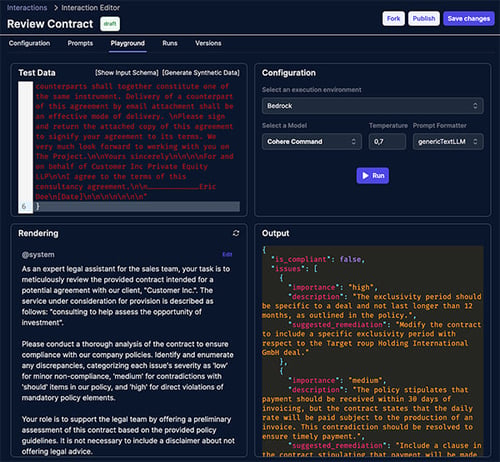LLM hallucinations are the feature, not the issue. There has been a lot of talk about LLM...
Demystifying Large Language Models: A Quick Guide for Enterprise Architects
In recent years, Large Language Models (LLMs) have emerged as a powerful tool in digital transformation and automation, transforming how businesses handle content and automate tasks. These models, built on cutting-edge deep learning architectures, possess an unprecedented capacity to understand, generate, and manipulate human language. In this article, we delve into what LLMs are, the use cases they power, and when to consider a platform for managing and orchestrating LLM-powered tasks across the enterprise.
What are Large Language Models?
At their core, LLMs are sophisticated machine learning models trained on vast amounts of textual input called parameters. To be ‘large,’ a billion or more parameters is often a starting point. These models build a pattern-based understanding of the nuances of language by analyzing patterns, relationships, and semantics within the data. Notable examples of LLMs include OpenAI's GPT (Generative Pre-trained Transformer) series, Google's BERT (Bidirectional Encoder Representations from Transformers), and Amazon Bedrock.
LLMs generate coherent text, answer questions, perform translations, summarize documents and images, and engage in conversation. They achieve this by employing deep learning techniques, which enable them to process long-range dependencies and effectively capture contextual information. LLMs can adapt to diverse tasks and domains through pre-training on large text content stores and fine-tuning on domain-specific data, making them highly versatile and applicable across various industries.
How are Large Language Models used?
The applications of LLMs span a broad spectrum of use cases, revolutionizing how businesses interact with textual data and automate tasks:

- Text Generation and Summarization: LLMs can generate human-like text, from creative writing to technical documentation. They can also summarize lengthy documents, extract critical information, and condense it into concise summaries, enhancing productivity and comprehension.
- Language Translation: LLMs excel at language translation tasks, enabling seamless communication across linguistic boundaries. By learning from parallel text examples, they can accurately translate between languages, facilitating global collaboration and expansion.
- Sentiment Analysis and Opinion Mining: LLMs can analyze sentiment and extract opinions from textual data, providing valuable insights into customer feedback, product reviews, and social media conversations. This automated analysis enables businesses to gauge public sentiment, identify emerging trends, and tailor their strategies accordingly.
- Virtual Assistants and Chatbots: LLMs serve as the foundation for virtual assistants and chatbots, offering personalized support and assistance to users. Understanding natural language queries and generating contextually relevant responses enhance customer service, streamline interactions, and automate routine tasks.
- Document Understanding and Information Extraction: LLMs can extract structured information from unstructured text, facilitating tasks such as document classification, named entity recognition, and information retrieval. Incorporating reading robot LLM tasks enables organizations to efficiently organize and analyze vast textual data.
When to invest in a platform for managing LLM-powered tasks
While the capabilities of LLMs are undeniably impressive, integrating them into enterprise architectures can pose significant challenges, especially for organizations needing more specialized expertise in machine learning and NLP. In such cases, investing in a large language model framework or platform for managing LLM-powered tasks can offer several advantages:
- Accelerated Development: Building integrations for LLM-powered tasks from scratch requires substantial time, resources, and expertise. Frameworks and platforms provide pre-built components, APIs, and tools that streamline development and deployment, accelerating time-to-market and reducing development costs.
- Scalability and Performance: LLM-powered tasks often demand significant computational resources, particularly during model training and inference. Frameworks and platforms offer scalable infrastructure and optimized algorithms for large-scale deployments, ensuring high performance and reliability.
- Model Management and Versioning: Managing multiple LLM models across different tasks and environments can be challenging without proper tooling. Frameworks and platforms provide centralized repositories for model storage, versioning, and management, facilitating collaboration, experimentation, and reproducibility.
- Security and Compliance: LLM-powered tasks often involve sensitive data, raising concerns regarding security and compliance. Frameworks and platforms offer robust security features such as encryption, access controls, and audit trails, ensuring data privacy and regulatory compliance.
- Support and Maintenance: Building and maintaining integrations for LLM-powered tasks require ongoing support and maintenance to address issues, update dependencies, and incorporate new features. Frameworks and platforms provide dedicated support channels, documentation, and community forums, enabling organizations to troubleshoot problems and stay updated with best practices.


